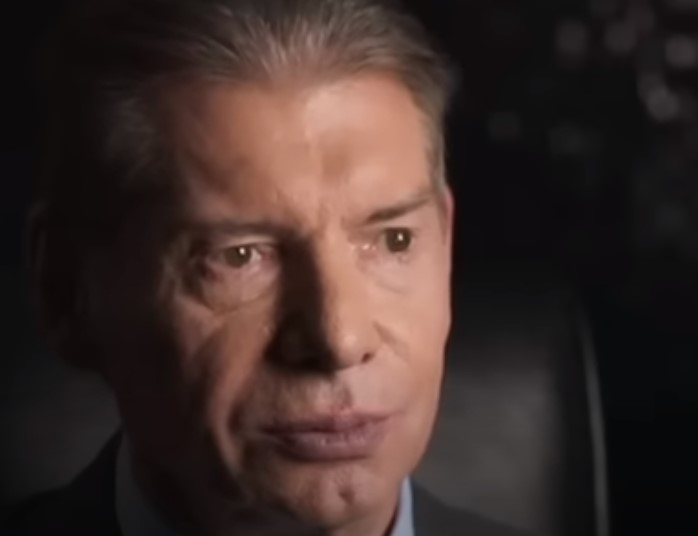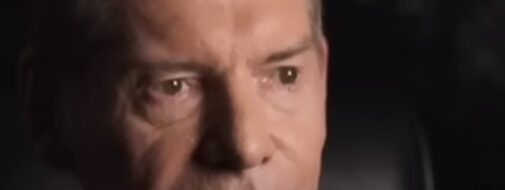VINCE MCMAHON CRYING – A FASCINATING BIOGRAPHY AND THE ALLEGED SEXUAL MISCONDUCT

Introduction
Vincent Kennedy McMahon is an American entrepreneur who specializes in promoting professional wrestling, owning media companies, and conducting business ventures. He holds the positions of chairman and CEO at WWE, Inc., previously known as the World Wrestling Federation (WWF). McMahon is renowned for his on-screen characterizations as the “Chairman of the Board” and “Mr. McMahon”.
Vince McMahon’s Formative Years
- Birth and Childhood
Vince McMahon was born on August 24, 1945, in Pinehurst, North Carolina. At a tender age, his parents underwent a divorce, leading him to be raised in a mobile home alongside his mother and a series of five stepfathers, a few of whom were abusive. Vince, afflicted with attention deficit disorder and dyslexia, brought his personal issues to school, resulting in his expulsion due to engaging in physical altercations and consuming alcohol. McMahon chose to attend Fishburne Military School in Waynesboro, Virginia, instead of considering the idea of going to a state reform school. Vince McMahon made history at the school by becoming the first cadet to face a court-martial.
- Early Career
McMahon Vincent was acquainted with the realm of wrestling at the age of 12, upon meeting his biological father, Vincent James McMahon, a renowned promoter. The lineage of professional wrestling in his family may be traced back even further, as his grandpa Jess was an influential figure in the world of wrestling and boxing promotion throughout the early 1900s.
Vincent Sr. was the proprietor of Capital Wrestling, a little wrestling organization that operated in the northeastern region of the United States throughout the 1940s and 1950s. “Capital” broadcasted several wrestling events, but, professional wrestling had not yet gained recognition as a mainstream sport. However, young Vince McMahon was deeply influenced by his initial encounter with his father, which fueled his unwavering resolve to pursue a career in wrestling.
Contrarily, his father held the belief that pursuing this profession would not be a prudent decision. Consequently, he explicitly prohibited his son from participating in any boxing matches, with the expectation that after completing his education, his son would pursue a different career path. McMahon obtained a bachelor of science degree in business administration from East Carolina State University in 1968.
In an interview with U.S. News & World Report, he revealed that he successfully completed college by attending summer classes for all five years of his enrollment and by convincing teachers to improve his grades. Until 1971, this tenacious man toiled at a variety of jobs, including selling machines and paper cups. It was in 1971 that he finally joined the family firm.
Vince McMahon’s Professional Trajectory
In 1971, Vincent McMahon assumed the role of a television announcer for Capital Wrestling and supervised the company’s activities in Bangor, Maine. His achievements in Bangor progressed into a role in New England, where he guided the company to even higher levels of success. McMahon’s father decided to retire and transfer ownership of the company to his son in 1982, as everything was progressing smoothly.
Upon assuming the role of chairman at Capital, Vince McMahon promptly initiated the expansion of the regional organization by procuring rival wrestling leagues around the nation and enlisting the talent of the opposing teams. Prior to that time, wrestling organizations were limited to specific regions and functioned only inside those territories.
Shortly thereafter, Vince McMahon established a new nationwide enterprise which was named World Wrestling Federation, operating under the umbrella of its parent corporation Titan Sports Inc. Thus, McMahon’s notion for a league that would span throughout the entire nation was conceived.
Vince McMahon commenced the promotion of the World Wrestling Federation utilizing his well-acclaimed methods. He focused on the entertainment aspect of the sport and created unique personas for the wrestlers, along with narratives that heightened the level of competitiveness. He played a proactive role in ensuring the matches were televised. Demonstrating astute economic acumen, he named his innovative innovation “sports entertainment,” openly stating that the outcomes of the bouts were prearranged. This type of promotion also liberated the league from governmental limitations.
In 1984, Vince McMahon elevated the notion by introducing the “Rock and Wrestling” concept, leveraging renowned rock stars like Cyndi Lauper and Aretha Franklin to endorse his concerts. The notion led to a surge in the popularity of wrestling, resulting in regular televised contests on major television networks by 1985.
In 1987, the live matches of the WWF consistently filled huge arenas and produced a total of $80 million in ticket sales for the year. Playing a significant role in this surge in sales was Wrestlemania III, a highly anticipated event that took place at the Pontiac Silverdome in Pontiac, Michigan. The event showcased the iconic WWF wrestler Hulk Hogan as he faced off against the legendary Andre the Giant. The event set a new world record for the highest number of attendees in an indoor setting and also garnered a substantial viewership through pay-per-view cable television.
McMahon’s sports entertainment brand had a growing following in the United States, prompting him to expand the live concerts and broadcasts to other countries like as Australia, France, Germany, and India. The allure and magnetism of Vince McMahon’s wrestling talents themselves further augmented the popularity of professional wrestling. Hulk Hogan emerged as the inaugural sensation of the organization during its ascent in prominence, and his image was extensively utilized for merchandising purposes, spanning from action figures to lunch boxes. Subsequently, several celebrities affiliated with WWF also took similar actions.
Amidst WWF’s challenges and difficulties, Ted Turner made the decision to establish his own wrestling organization, known as World Championship Wrestling (WCW). The WCW successfully attracted notable WWF talent, including Hulk Hogan, and its program Monday Nitro Live directly competed with WWF’s Monday Night Raw. At first, the WCW was proclaimed the winner, as it attracted the most audience for the next 18 months.
Throughout the remainder of the 1990s, the WWF saw a resurgence, dominating in terms of ratings and profitability. It generated a total revenue of $84 million, surpassing WCW’s $50 million in 1995. In 2001, McMahon’s case against Turner for intellectual property theft remained unresolved. However, the intense rivalry between the two entities appeared to be advantageous for both leagues, resulting in an unparalleled surge in popularity for both.
The late 1990s witnessed a surge in viewership for professional wrestling, reaching unprecedented levels. During this period, the wrestlers’ persona underwent a transformation, becoming more conceited and rebellious against the established norms. Stone Cold Steve Austin, for instance, was fashioned based on several notorious serial killers. Vince McMahon fulfilled a long-held aspiration by entering the wrestling ring and creating the persona of a wealthy magnate determined to seek vengeance against any wrestler who defied him.
In October 1999, the World Wrestling Federation had an initial public offering, generating millions of dollars in capital. Titan Sports underwent a transformation and rebranded itself as World Wrestling Federation Entertainment, Inc. The television programs WWF Smackdown! and Raw had high ratings on cable television in 1999 and 2000. Female wrestlers such as Chyna started to gain fame and popularity. Additional wrestling celebrities, including The Rock, made notable appearances on both television and in the film industry.
In the year 2000, Vince McMahon entered the realm of professional football by establishing a fresh league known as the XFL. Through a partnership with NBC, the highly anticipated league embraced the captivating approach of the WWF. The XFL, however, was deemed a catastrophic failure and ceased operations after a solitary season. WWF’s stock saw a significant decline, dropping from $22 in January to $10.95 by October 2001.
- Net Worth
Vince McMahon’s net worth is projected to be $3.1 billion in 2023. He derives income via his ownership of WWE, Inc., in addition to other entrepreneurial endeavors.
The Personal Life of Vince McMahon
Vincent McMahon is married to Linda, who holds the positions of president and CEO at World Wrestling Federation Entertainment. Stephanie and Shane, the offspring of the marriage, are also employed with the company.
- Scandals
During the late 1980s and early 1990s, McMahon’s corporation encountered further obstacles. A series of adverse publicity ensued when a steroid probe implicated Hulk Hogan and other WWF wrestlers. McMahon faced charges of arranging to supply the wrestlers with anabolic drugs between 1985 and 1991. Hogan provided testimony stating that there was an explicit encouragement to utilize steroids, and he himself had regularly engaged in their usage, while previously denying this fact in public.
McMahon, who entered a plea of not guilty, confessed to utilizing steroids prior to their prohibition in 1988. Vince McMahon was convicted on one count of conspiring to deceive the U.S. Food and Drug Administration but escaped severe penalties after being acquitted of the remaining charges.
Vince McMahon also faced allegations of grave sexual misconduct and sex trafficking, which he vehemently refuted. Janel Grant, a former employee of WWE, who had positions in the company’s legal and talent departments and consented to be identified in the case, submitted a detailed 67-page lawsuit.
In the lawsuit, she claimed to have experienced physical and emotional abuse, sexual assault, and trafficking while working at the company. She alleged that McMahon enlisted individuals to engage in sexual activities with her at the WWE headquarters and subjected her to acts of severe cruelty and debasement, resulting in her developing a desensitized state of mind as a means of enduring the traumatic encounters. McMahon, who is currently 78 years old, is additionally alleged to have distributed sexually graphic photographs and recordings of Ms. Grant to other individuals, including fellow WWE staff members.
RELATED POSTS:
